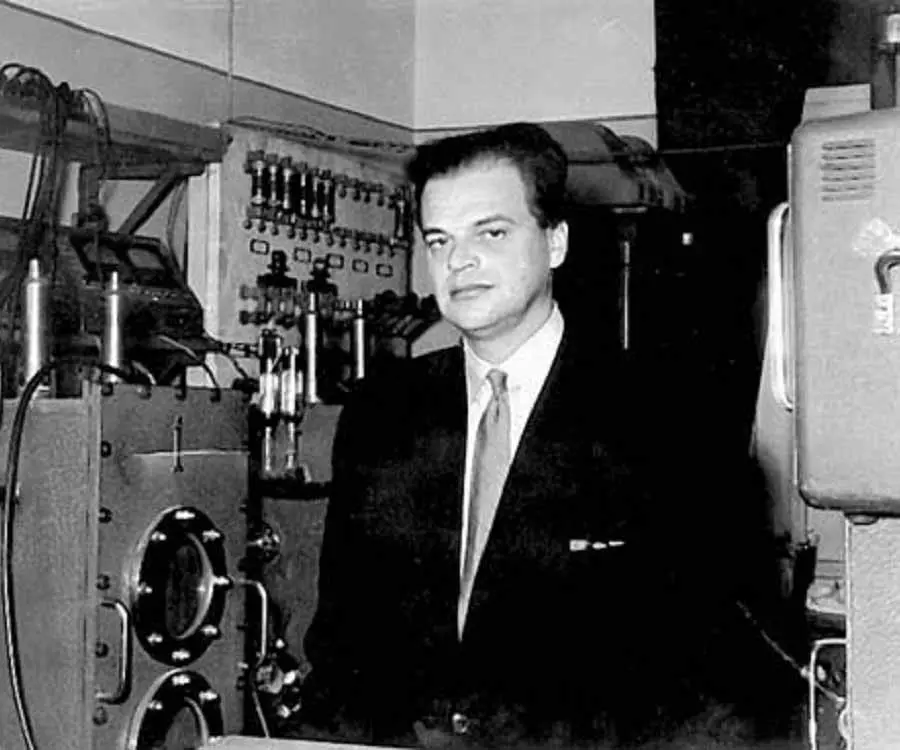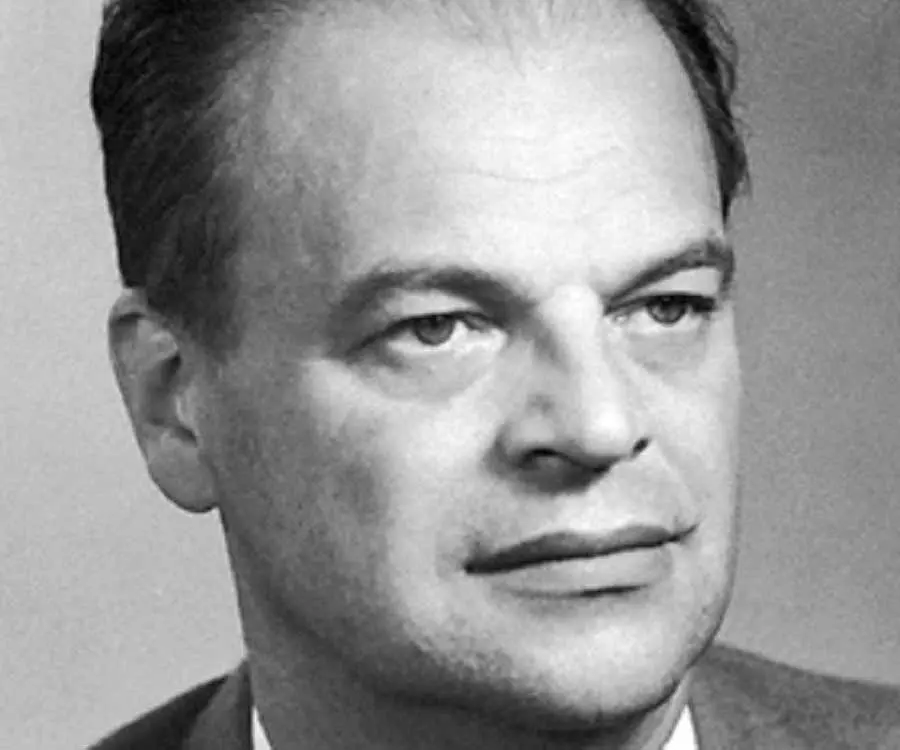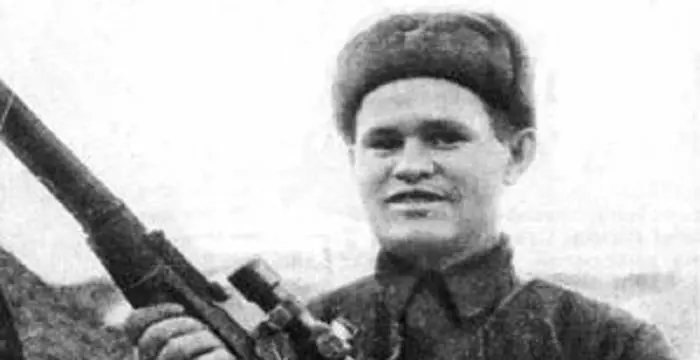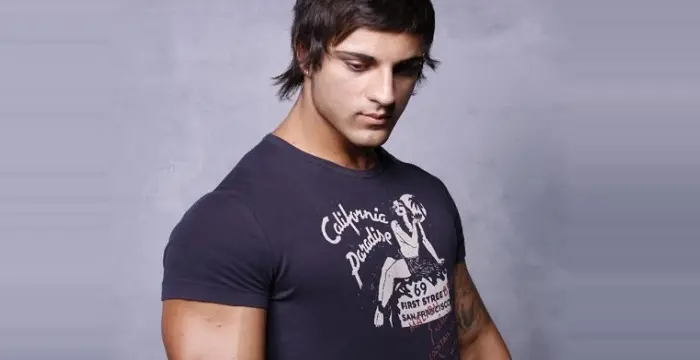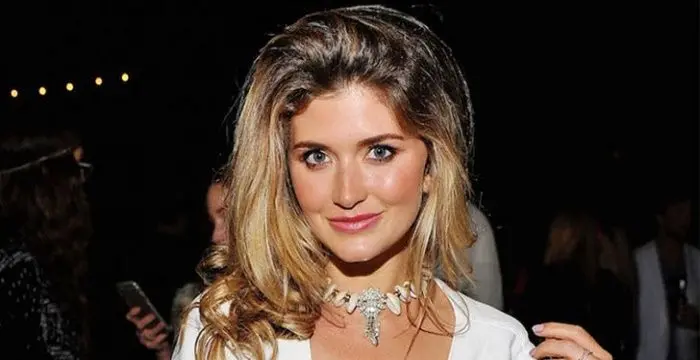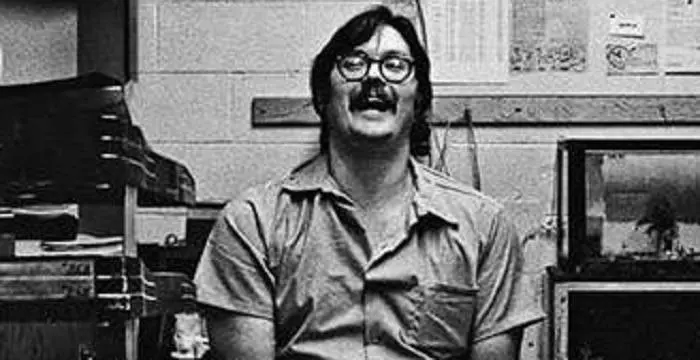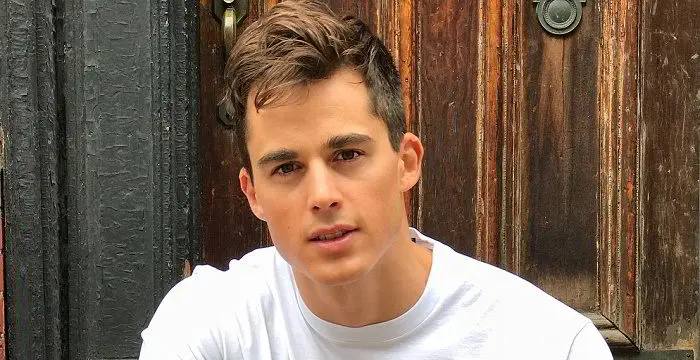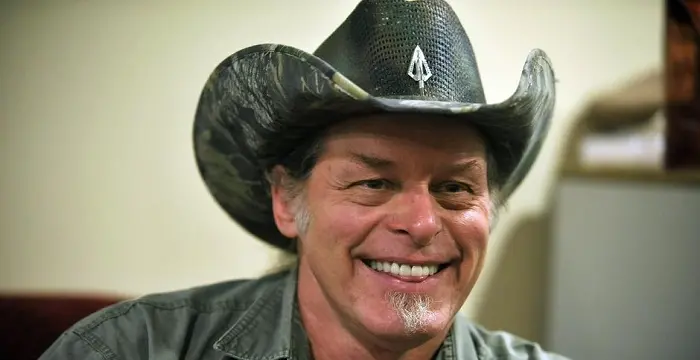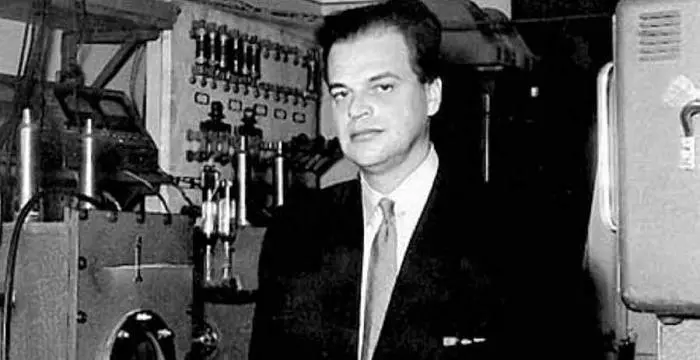
Nikolay Basov - Scientists, Birthday and Childhood
Nikolay Basov's Personal Details
Nikolay Basov was a Soviet physicist who won Nobel Prize for his work on quantum electrodynamics
| Information | Detail |
|---|---|
| Birthday | December 14, 1922 |
| Died on | July 1, 2001 |
| Nationality | Russian |
| Famous | Scientists, Physicists |
| Spouses | Ksenia Tikhonovna Basova |
| Known as | Nikolay Gennadiyevich Basov |
| Birth Place | Usman, Russia |
| Gender | Male |
| Father | Gennady Fedorovich Basov |
| Mother | Zinaida Andreevna Molchanova |
| Sun Sign | Sagittarius |
| Born in | Usman, Russia |
| Famous as | Physicist |
| Died at Age | 78 |
// Famous Physicists
Henry Cavendish
Henry Cavendish was a theoretical chemist and physicist, renowned for discovery of hydrogen and calculation of the mass of earth. To know more about his childhood, profile, timeline and career read on
Walter Kohn
Nobel Laureate Walter Kohn was an Austrian-born American theoretical chemist and physicist. Check out this biography to know about his childhood, life, achievements, works & timeline.
Nikola Tesla
Nikola Tesla was a Serbian-American inventor, best known for his development of alternating current electrical systems. This biography of Nikola Tesla provides detailed information about his childhood, life, achievements, works & timeline.
Nikolay Basov's photo
Who is Nikolay Basov?
Nikolay Basov was a Soviet physicist and Nobel Laureate who made remarkable contribution in the field of quantum electrodynamics and optical physics. He is best remembered for his fundamental work in the field of quantum electronics, which led to the construction of oscillators and amplifiers based on the maser-laser principle. One of the founders of quantum electronics, Basov dedicated much of his career in investigating the excitation of atoms or molecules to amplify electromagnetic radiation. His partner, Aleksandr Prokhorov, studied the microwave spectroscopy of gases. The duo combined their work using a gas-filled cavity with reflectors at both ends to amplify the microwave beams. Their experiment with this molecular oscillator converted excited ammonia molecules into a molecular beam called the maser. In 1962, Basov laid out the principles of laser using a similar technique in light spectrum. It was for this revolutionary work based on maser-laser principle that he was awarded the prestigious Nobel Prize in Physics, which he shared with Aleksandr Prokhorov and Charles H Townes, who conducted similar work independently.
// Famous Scientists
Juliane Koepcke
Juliane Koepcke is a German-Peruvian biologist, who was the lone survivor among the 92 passengers and crew of the ill-fated LANSA Flight 508 that crashed in the Peruvian rainforest on 24 December 1971. Know more about her life in this biography.
Henry Cavendish
Henry Cavendish was a theoretical chemist and physicist, renowned for discovery of hydrogen and calculation of the mass of earth. To know more about his childhood, profile, timeline and career read on
Konstantin Tsiolkovsky
Konstantin Tsiolkovsky was a Russian rocket scientist and a pioneer of astronautics. This biography provides detailed information about his childhood, family, personal life, career, achievements, etc.
Childhood & Early Life
Nikolay Basov was born on December 14, 1922, in the small town of Usman near Voronezh, to Gennady Fedorovich Basov and Zinaida Andreevna Molchanova. His father was a professor at the Voronezh Forest Institute and dedicated his life investigating the influence of forest belts on underground waters and on surface drainage.
Young Basov trained himself academically at Voronezh. In 1941, he completed secondary school after which he was called for military service at Kuibyshev Military Medical Academy.
In 1943, he left the academy as military doctor’s assistant and went to serve in the Red Army, participating in the Second World War with the 1st Ukrainian Front.
Basov was relieved off his military duties in December 1945. Later, he enrolled himself at the Moscow Institute of Physical Engineers, studying theoretical and experimental physics. He graduated from the same in 1950
From 1950 to 1953 he served as a postgraduate student of the Moscow Institute of Physical Engineers. Simultaneously, he held professorship at the Institute in the department of solid-state physics. Alongside this, he worked on his thesis at the P.N. Lebedev Physical Institute of the Academy of Sciences, U.S.S.R., under the guidance of Professor M.A. Leontovich and Professor A.M. Prochorov. His association with Prokhorov lasted long.
Career
It was in 1952 that Basov began his work in the field of quantum radiophysics. Both theoretically and experimentally, Basov made several attempts to design and build oscillators.
In 1953, he defended his dissertation for the Candidate of Sciences degree, which is equivalent to PhD. Three years later, in 1956, he came up with a dissertation on the theme ‘A Molecular Oscillator’ for the Doctor of Sciences degree. His work summed up the theoretical and experimental works on creation of a molecular oscillator utilizing an ammonia beam.
In 1955, Basov, along with his pupils and collaborators, organized a group for the investigation of the frequency stability of molecular oscillators. Together they studied the dependence of the oscillator frequency on different parameters for a series of ammonia spectral lines.
Basov’s group researched ways for increasing frequency stability, producing slow molecules, investigating the operation of oscillators with resonators in series, realizing phase stabilization of klystron frequency, studying transition processes in molecular oscillators, and designing an oscillator utilizing a beam of deuterium ammonia.
In 1957, Basov worked on the design and construction of quantum oscillators in the optical range. Following year, together with B.M Vul and Yu.M Popov, he investigated the conditions for production of states with a negative temperature in semiconductors, and suggested utilization of a pulse breakdown for that purpose.
In 1961, Basov came up with three different methods for obtaining negative temperature state in semiconductors in the presence of direct and indirect transitions. It was the result of this work that in 1963 semiconductor lasers utilizing crystals of gallium arsenide were made.
Alongside his work on quantum oscillators, Basov carried out theoretical and experimental research in the field of powerful lasers. His research resulted in the development of high-power single-pulse Nd-glass lasers.
In 1963, Basov began his work in the field of optoelectronics. In 1966, he initiated the study of the radiation of the condensed rare gases under the action of a powerful electron beam.
In 1967 along with his collaborators, he developed a number of fast-operating logic elements on the basis of diode lasers. In 1970, he first obtained the laser emission in the vacuum ultraviolet range.
Other than researching in the field of quantum electrodynamics and optical physics, Basov made relevant discoveries in the field of chemical lasers as well. In 1970, under his guidance, an original chemical laser was achieved which operated on a mixture of deuterium, F and CO2 at the atmospheric pressure. Towards the end, Basov presented experimental evidence for the stimulation of chemical reactions by the infrared laser radiation.
In 1970, he proposed and experimentally developed an elion (electrical pumping of ionized compressed gases) method of gas laser excitation. Using this method for a CO2 and N2 mixture compressed to 25 atm., Basov along with his collaborators achieved a great increase of power of the gas laser volume unit compared to the typical low pressure CO2 lasers.
Apart from his research work, Basov served in several academic positions. He took up professorship at the Moscow Engineering Physics Institute. He was the Director of Lebedev Physical Institute (LPI) from 1973 to 1988. He was the head of the laboratory of quantum radiophysics at the LPI until his death in 2001.
Major Works
Basov’s most famous work came during the decade of 1950s, when he together with Aleksandr Prokhorov, published a paper describing the possibility of a molecular generator of coherent microwave radiation. The idea was based on the effect of stimulated emission of radiation by atoms. The device used for the purpose was primarily named maser. The duo with the help of masers and lasers, produced concentrated and coherent beams of microwaves and light, respectively.
Awards & Achievements
In 1959, Basov and Prokhorov received the coveted Lenin Prize for investigations that led to the creation of molecular oscillators and paramagnetic amplifiers.
In 1964, Basov, Charles Hard Townes and Aleksandr Mikhailovich Prokhorov were felicitated with Nobel Prize in Physics for their work in the field of quantum electronics, which led to the construction of oscillators and amplifiers based on the maser-laser principle.
In 1962, he was elected as the corresponding member of the USSR Academy of Sciences and became a Full Member in 1966.
In 1967, he was elected a Member of the Presidium of the Academy, and from 1990 served as the councillor of the Presidium of the USSR Academy of Sciences.
In 1970, he was awarded the rank of Hero of Socialist Labour.
He served as the Honorary President and Member of the International Academy of Science, Munich.
Personal Life & Legacy
Nikolay Basov married Ksenia Tikhonovna Basova in 1950. She was a physicist too and worked at the Department of General Physics of the Moscow Institute of Physical Engineers. The couple was blessed with two sons, Gennady and Dmitry.
He breathed his last on July 1, 2001, in Moscow Russia, at the age of 78.
// Famous Russian peoples
Vasily Zaytsev
Vasily Zatysev was a Russian sniper who served during the World War II. Check out this biography to know about his childhood, family life, achievements and fun facts about him.
Zyzz (Aziz Shavershian)
Zyzz (Aziz Shavershian) was a popular Australian Body Builder and internet personality. Check out this biography to know about his childhood, family life, achievements and other facts about his life.
Kristina Pimenova
Read this bio to gather several facts, trivia and many details related to the personal and family life of Kristina Pimenova.
Nikolay Basov's awards
| Year | Name | Award |
|---|---|---|
Other | ||
| 0 | Nobel Prize in Physics (1964) | |
| 0 | Kalinga Prize (1986) | |
| 0 | Lomonosov Gold Medal (1989) | |
Nikolay Basov biography timelines
- // 14th Dec 1922Nikolay Basov was born on December 14, 1922, in the small town of Usman near Voronezh, to Gennady Fedorovich Basov and Zinaida Andreevna Molchanova. His father was a professor at the Voronezh Forest Institute and dedicated his life investigating the influence of forest belts on underground waters and on surface drainage.
- // 1941Young Basov trained himself academically at Voronezh. In 1941, he completed secondary school after which he was called for military service at Kuibyshev Military Medical Academy.
- // 1943In 1943, he left the academy as military doctor’s assistant and went to serve in the Red Army, participating in the Second World War with the 1st Ukrainian Front.
- // Dec 1945 To 1950Basov was relieved off his military duties in December 1945. Later, he enrolled himself at the Moscow Institute of Physical Engineers, studying theoretical and experimental physics. He graduated from the same in 1950
- // 1950 To 1953From 1950 to 1953 he served as a postgraduate student of the Moscow Institute of Physical Engineers. Simultaneously, he held professorship at the Institute in the department of solid-state physics. Alongside this, he worked on his thesis at the P.N. Lebedev Physical Institute of the Academy of Sciences, U.S.S.R., under the guidance of Professor M.A. Leontovich and Professor A.M. Prochorov. His association with Prokhorov lasted long.
- // 1950Nikolay Basov married Ksenia Tikhonovna Basova in 1950. She was a physicist too and worked at the Department of General Physics of the Moscow Institute of Physical Engineers. The couple was blessed with two sons, Gennady and Dmitry.
- // 1952It was in 1952 that Basov began his work in the field of quantum radiophysics. Both theoretically and experimentally, Basov made several attempts to design and build oscillators.
- // 1953 To 1956In 1953, he defended his dissertation for the Candidate of Sciences degree, which is equivalent to PhD. Three years later, in 1956, he came up with a dissertation on the theme ‘A Molecular Oscillator’ for the Doctor of Sciences degree. His work summed up the theoretical and experimental works on creation of a molecular oscillator utilizing an ammonia beam.
- // 1955In 1955, Basov, along with his pupils and collaborators, organized a group for the investigation of the frequency stability of molecular oscillators. Together they studied the dependence of the oscillator frequency on different parameters for a series of ammonia spectral lines.
- // 1957In 1957, Basov worked on the design and construction of quantum oscillators in the optical range. Following year, together with B.M Vul and Yu.M Popov, he investigated the conditions for production of states with a negative temperature in semiconductors, and suggested utilization of a pulse breakdown for that purpose.
- // 1959In 1959, Basov and Prokhorov received the coveted Lenin Prize for investigations that led to the creation of molecular oscillators and paramagnetic amplifiers.
- // 1961 To 1963In 1961, Basov came up with three different methods for obtaining negative temperature state in semiconductors in the presence of direct and indirect transitions. It was the result of this work that in 1963 semiconductor lasers utilizing crystals of gallium arsenide were made.
- // 1962 To 1966In 1962, he was elected as the corresponding member of the USSR Academy of Sciences and became a Full Member in 1966.
- // 1964In 1964, Basov, Charles Hard Townes and Aleksandr Mikhailovich Prokhorov were felicitated with Nobel Prize in Physics for their work in the field of quantum electronics, which led to the construction of oscillators and amplifiers based on the maser-laser principle.
- // 1967 To 1990In 1967, he was elected a Member of the Presidium of the Academy, and from 1990 served as the councillor of the Presidium of the USSR Academy of Sciences.
- // 1970Other than researching in the field of quantum electrodynamics and optical physics, Basov made relevant discoveries in the field of chemical lasers as well. In 1970, under his guidance, an original chemical laser was achieved which operated on a mixture of deuterium, F and CO2 at the atmospheric pressure. Towards the end, Basov presented experimental evidence for the stimulation of chemical reactions by the infrared laser radiation.
- // 1970In 1970, he proposed and experimentally developed an elion (electrical pumping of ionized compressed gases) method of gas laser excitation. Using this method for a CO2 and N2 mixture compressed to 25 atm., Basov along with his collaborators achieved a great increase of power of the gas laser volume unit compared to the typical low pressure CO2 lasers.
- // 1970In 1970, he was awarded the rank of Hero of Socialist Labour.
- // 1973 To 1988Apart from his research work, Basov served in several academic positions. He took up professorship at the Moscow Engineering Physics Institute. He was the Director of Lebedev Physical Institute (LPI) from 1973 to 1988. He was the head of the laboratory of quantum radiophysics at the LPI until his death in 2001.
- // 1st Jul 2001He breathed his last on July 1, 2001, in Moscow Russia, at the age of 78.
// Famous Sagittarius Celebrities peoples
Billie Eilish
Billie Eilish Pirate Baird O’Connell is an American singer and songwriter. Check out this biography to know about her childhood, family, personal life, birthday, etc.
Jacelyn Reeves
Jacelyn Reeves is a former flight attendant who once had a fling with Clint Eastwood. Check out this biography to know about her birthday, childhood, family life, achievements and fun facts about her.
Edmund Kemper
Edmund Kemper is a convicted serial killer from America who murdered ten people. Check out this biography to know about his childhood, life, crimes and other facts about him.
Pietro Boselli
Pietro Boselli is an Italian model, engineer, teacher, and fitness athlete who became famous as the ‘world’s sexiest math teacher’. Check out this biography to know about his birthday, childhood, family life, achievements and fun facts about him.
Niqoles Heard
Lil Niqo is an American rapper and musical artist. Let’s take a look at his family and personal life including age, date of birth, net worth, girlfriends, and fun facts.
Ted Nugent
Ted Nugent is a hard rock musician known for his hits ‘Stranglehold’ and ‘Cat Scratch Fever’. This biography of Ted Nugent provides detailed information about his childhood, life, achievements, works & timeline.
Nikolay Basov's FAQ
What is Nikolay Basov birthday?
Nikolay Basov was born at 1922-12-14
When was Nikolay Basov died?
Nikolay Basov was died at 2001-07-01
Where was Nikolay Basov died?
Nikolay Basov was died in Moscow, Russia
Which age was Nikolay Basov died?
Nikolay Basov was died at age 78
Where is Nikolay Basov's birth place?
Nikolay Basov was born in Usman, Russia
What is Nikolay Basov nationalities?
Nikolay Basov's nationalities is Russian
Who is Nikolay Basov spouses?
Nikolay Basov's spouses is Ksenia Tikhonovna Basova
Who is Nikolay Basov's father?
Nikolay Basov's father is Gennady Fedorovich Basov
Who is Nikolay Basov's mother?
Nikolay Basov's mother is Zinaida Andreevna Molchanova
What is Nikolay Basov's sun sign?
Nikolay Basov is Sagittarius
How famous is Nikolay Basov?
Nikolay Basov is famouse as Physicist



